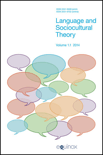
Language and Sociocultural Theory
Scope & Guideline
Decoding the Nuances of Human Communication
Introduction
Aims and Scopes
- Sociocultural Perspectives on Language Learning:
The journal emphasizes research that applies sociocultural theory to understand language acquisition processes, highlighting the role of social interaction, cultural context, and historical factors. - Dynamic Assessment and Mediation:
A core area of focus is the application of dynamic assessment methods, which integrate teaching and assessment in a way that supports learner development, particularly within second language contexts. - Integration of Multimodal Communication:
Research in this journal often examines the use of multimodal communication strategies in language education, investigating how various communicative resources can enhance learning. - Teacher Development and Identity:
The journal explores the professional development of language teachers, particularly how sociocultural factors shape teacher identity and instructional practices. - Application of Concept-Based Language Instruction:
There is a significant focus on innovative instructional approaches, particularly concept-based language instruction (C-BLI), which seeks to enhance language learning through conceptual understanding. - Cultural and Contextual Factors in Language Education:
Research often considers how cultural and contextual elements impact language learning experiences, particularly in diverse educational settings.
Trending and Emerging
- Technological Integration in Language Learning:
The development of programs and assessments that utilize technology, such as computerized dynamic assessment tools, is becoming a prominent theme, reflecting the growing importance of digital literacy in language education. - Focus on Learner Agency:
There is an increasing emphasis on understanding and promoting learner agency within sociocultural frameworks, particularly in relation to how students engage with language learning through their own perspectives and experiences. - Collaborative and Interactive Learning Environments:
Research highlighting the importance of collaborative learning and peer interactions is on the rise, showcasing the value of social dynamics in effective language instruction. - Cultural Historical Activity Theory (CHAT):
An emerging trend is the application of CHAT in language education, which provides a framework for understanding the complex interactions between learners, educators, and the sociocultural context. - Translinguistic Approaches:
There is a growing interest in translinguistic methods that leverage multiple languages in instruction, reflecting the increasingly multicultural and multilingual nature of classrooms.
Declining or Waning
- Traditional Language Teaching Methods:
There seems to be a waning interest in traditional, teacher-centered language teaching methodologies, as the focus shifts towards more interactive and socioculturally informed approaches. - General Linguistic Theory without Sociocultural Context:
Research that purely addresses linguistic theory without integrating sociocultural perspectives is becoming less frequent, as the journal prioritizes contextually situated language learning. - Static Assessments:
Static forms of assessment that do not consider the dynamic and interactive nature of learning are appearing less often, as the emphasis is increasingly on formative and ongoing assessment strategies.
Similar Journals
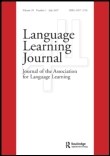
Language Learning Journal
Fostering global dialogue in language learning advancements.Welcome to the Language Learning Journal, a premier resource for researchers, educators, and linguists alike, published by Routledge Journals, Taylor & Francis Ltd. With a proud history dating back to 1990 and commitment to advancing the exploration of language acquisition, this esteemed journal boasts an impressive impact factor within Q1 rankings across both the Education and Linguistics and Language categories. Ranked #40 in Language and Linguistics and achieving a 96th percentile in the Arts and Humanities, the journal serves as a crucial platform for disseminating cutting-edge research, innovative methodologies, and impactful discussions in the field of language learning. Although currently not offered as an open access publication, the depth and quality of content ensure significant contributions to the body of knowledge for professionals and scholars. With its global reach, the Language Learning Journal is dedicated to fostering the development and understanding of language learning processes, enabling readers to stay informed about the latest trends and findings through rigorous peer-reviewed articles.
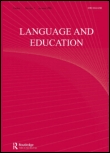
Language and Education
Fostering Excellence in Language Studies and TeachingLanguage and Education is a leading academic journal published by Routledge Journals, Taylor & Francis Ltd, specializing in the intersection of language studies and educational practices. With an impressive Q1 ranking in both Education and Linguistics and Language categories for 2023, it stands out as a crucial resource for researchers, educators, and industry professionals. Covering a wide array of topics pertinent to language acquisition, pedagogical methodologies, and culturally responsive education, this journal supports rigorous scholarship in the field. While not currently offering open access options, its contributions are vital for advancing knowledge and fostering innovation across disciplines. The journal's long-term commitment to excellence is evidenced by its high rankings in Scopus, placing it in the 94th percentile in Language and Linguistics and the 80th percentile in Education. Since its inception in 1987, Language and Education has not only tracked the evolving landscape of language education but has also actively shaped it, making it an indispensable tool for anyone invested in educational research and practice.
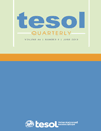
TESOL QUARTERLY
Empowering Educators with Innovative InsightsTESOL Quarterly, published by Wiley, is a premier academic journal in the fields of Education and Linguistics, noted for its significant contributions to the study of Teaching English to Speakers of Other Languages. Since its inception in 1981, this journal has established itself as a vital platform for researchers and educators, emphasizing empirical studies, innovative teaching practices, and critical reviews that inform policy and pedagogy. With an impressive impact factor, it consistently ranks in the Q1 Quartile across multiple categories in both Education and Linguistics, highlighting its influence and reach within the scholarly community. The journal boasts strong Scopus rankings, placing it in the top 96th percentile among related publications, further affirming its essential role in disseminating cutting-edge research. Although it does not offer open access, TESOL Quarterly remains dedicated to promoting high-quality scholarship that advances the understanding of language education practices globally.
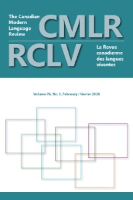
CANADIAN MODERN LANGUAGE REVIEW-REVUE CANADIENNE DES LANGUES VIVANTES
Bridging Theory and Practice in Modern Language EducationCanadian Modern Language Review - Revue Canadienne des Langues Vivantes is a leading scholarly journal published by University of Toronto Press Inc, focused on the field of linguistics and language education. With its ISBN 0008-4506 and E-ISBN 1710-1131, this journal has established itself as a significant contributor to research in both the education and linguistics categories, currently holding a Q3 classification in Education and a Q2 in Linguistics and Language as of 2023. It boasts an impressive Scopus rank within the top percentiles for both fields, ensuring its validity and relevance among contemporary academic discourse. The journal's emphasis on publishing high-quality research aims to advance understanding and promote effective pedagogical practices, making it an essential resource for researchers, educators, and students passionate about modern languages. The Canadian Modern Language Review has been active from 1996 to 2024, facilitating discussions that bridge linguistic theory and educational practices, although it maintains a subscription-based access approach. Situated in Toronto, Canada, at the Journals Division, 5201 Dufferin St, Downsview, ON M3H 5T8, this journal invites contributions that explore innovative methodologies and critical issues in the field, fostering an environment of academic rigor and collaboration.
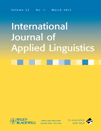
International Journal of Applied Linguistics
Exploring Real-World Applications of LinguisticsInternational Journal of Applied Linguistics, published by WILEY, is a premier platform for cutting-edge research in the field of applied linguistics. With a notable Impact Factor and ranked in the top Q1 quartile of linguistics and language, this journal serves as an essential resource for scholars, practitioners, and students. The journal’s wide-ranging scope includes various subfields such as language acquisition, language education, sociolinguistics, and discourse analysis, fostering multidisciplinary approaches to language studies. It has achieved a significant Scopus Rank, placing it in the 90th percentile for both Arts and Humanities as well as Social Sciences categories, reflecting its high visibility and influence in the academic community. The International Journal of Applied Linguistics is committed to advancing the understanding of language use in real-world contexts through rigorously peer-reviewed articles that contribute to both theory and practical applications. While it is not an open-access journal, it remains a highly respected publication for researchers looking to disseminate and acquire knowledge in applied linguistics.
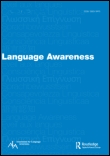
Language Awareness
Connecting Theory and Practice in Language UseLanguage Awareness is a leading academic journal published by Routledge Journals, Taylor & Francis Ltd, focusing on the intersection of language, education, and linguistic theory. Since its inception in 1992, this esteemed journal has provided a platform for scholarly discourse and research advancement, boasting a strong impact within its field, as indicated by its Q1 quartile rankings in both Education and Linguistics and Language as of 2023. The journal's commitment to promoting awareness and understanding of language use in diverse contexts is highlighted through rigorous peer-reviewed articles that cater to researchers, practitioners, and educators. With an impressive positioning in various Scopus categories—ranking 95th in Arts and Humanities, and 111th in Social Sciences—it ensures access to high-quality research that influences both pedagogy and linguistic methodologies. Although it does not offer Open Access options, its content remains essential for those passionate about linguistic research and educational innovation.
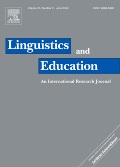
Linguistics and Education
Innovating Pedagogy with Linguistic ResearchLinguistics and Education, published by Elsevier, is a premier journal dedicated to advancing the understanding of the intersections between linguistics and educational practices. With its ISSN 0898-5898 and E-ISSN 1873-1864, this journal has established itself as a significant platform since its inception in 1988, continuing to produce impactful research up to 2024. It enjoys a prestigious Q1 ranking in both the Education and Linguistics and Language categories, reflecting its high-quality contributions and leading role in the field. The journal’s Scopus rankings further underscore its influence, being placed in the 87th percentile for Arts and Humanities in Language and Linguistics, and the 86th percentile in Social Sciences in Linguistics and Language. Although it operates under traditional subscription access, its contributions are essential for researchers, professionals, and students alike, making substantial strides in the understanding of language, learning environments, and pedagogical strategies. The journal's objective is to foster interdisciplinary dialogue and disseminate innovative research that informs educational policy and practice.

ELIA-Estudios de Linguistica Inglesa Aplicada
Unveiling the Nuances of English: A Scholarly JourneyELIA-Estudios de Linguistica Inglesa Aplicada, published by the University of Sevilla, Faculty of Philology, is an esteemed open-access journal that has been a cornerstone in the field of English Linguistics since its establishment in 2000. With an ISSN of 1576-5059 and an E-ISSN of 2253-8283, ELIA aims to foster scholarly research and discourse by providing a platform for innovative studies in linguistics and applied language studies. As a testament to its academic rigor, the journal has achieved a Q2 ranking in Linguistics and Language for 2023, reflecting its impact and relevance within the academic community. The journal is indexed in Scopus, further solidifying its standing with ranks in both the Arts and Humanities and Social Sciences categories. Researchers, professionals, and students alike will find valuable insights and research findings that contribute to the evolving understanding of English linguistics. The journal is based in Sevilla, Spain, and can be accessed freely online, making it an accessible resource for those engaged in the study of language and linguistics.
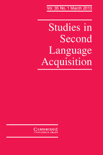
STUDIES IN SECOND LANGUAGE ACQUISITION
Connecting theory and practice in language education.STUDIES IN SECOND LANGUAGE ACQUISITION, published by Cambridge University Press, is a premier journal dedicated to advancing the field of second language acquisition. With an ISSN of 0272-2631 and an E-ISSN of 1470-1545, this journal has carved its niche as a leading resource for scholars and practitioners alike since 1978. Recognized in Q1 quartiles across both Education and Linguistics and Language, and ranked within the top 2% in its fields according to Scopus, it provides a platform for cutting-edge research that addresses the complexities of language learning and teaching. Although it does not currently offer open access, the journal remains widely accessible through institutional subscriptions, ensuring that groundbreaking research reaches a global audience. With a focus on empirical studies, theoretical discussions, and innovative methodologies, STUDIES IN SECOND LANGUAGE ACQUISITION is essential for those seeking to deepen their understanding of language education, making it a must-read for researchers, educators, and students committed to the evolving landscape of language acquisition.
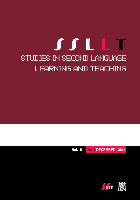
Studies in Second Language Learning and Teaching
Advancing the frontiers of language education.Studies in Second Language Learning and Teaching is a premier open-access journal dedicated to advancing research and scholarship in the fields of education, linguistics, and language acquisition. Published by ADAM MICKIEWICZ UNIVERSITY, KALISZ, this journal has consistently achieved high acclaim, reflected in its impressive Q1 rankings in both Education and Linguistics and Language categories for 2023. With a robust focus on innovative methods, effective pedagogical strategies, and interdisciplinary approaches, Studies in Second Language Learning and Teaching aims to facilitate dialogue among researchers, educators, and practitioners, fostering a deeper understanding of language learning and teaching in diverse contexts. Since its transition to open access in 2011, the journal has expanded its reach, providing valuable resources and research findings to a global audience. With an exceptional Scopus ranking placing it in the top percentiles across multiple categories, this journal stands as a crucial platform for the dissemination of ground-breaking research in second language education.